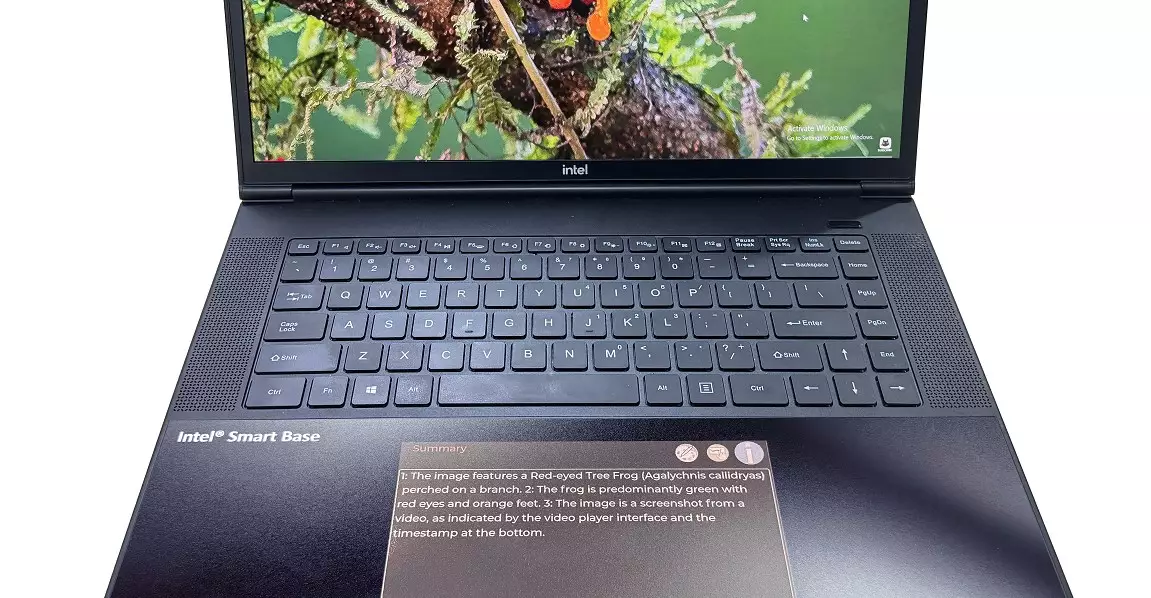The future of laptops is seemingly on the cusp of a significant leap forward, thanks to innovative technology that challenges conventional design paradigms. E Ink, best known for its e-reader displays, is now venturing into the realm of ultraportable, energy-efficient touchpads. While this move might seem incremental at first glance—merely replacing a standard touchpad—the implications are profound. E Ink’s approach reimagines what a laptop’s touch surface can do, shifting from a passive pointing device to an active information hub tailored for the evolving demands of remote work, AI integration, and user convenience.
Rather than simply mimicking typical LCD screens or secondary displays, E Ink’s technology emphasizes efficiency and focus. By leveraging its signature electronic paper design, the touchpad can display contextual information—like task shortcuts, notifications, or ongoing AI interactions—without draining the battery as traditional screens do. This aligns perfectly with the demands of modern users who want quick, glanceable data without sacrificing portability or power endurance. Essentially, this innovation challenges the status quo by redefining the touchpad as an intelligent, customizable workspace that adapts seamlessly to user needs.
Enhancing Productivity with Dedicated AI Space
The core promise of E Ink’s new touchpad is its potential to foster a more fluid, less cluttered work experience. Imagine working on a document while an AI assistant provides real-time summaries or suggestions directly underneath your fingers, eliminating the need to juggle multiple windows or disrupt your workflow. This concept not only streamlines multitasking but also reduces cognitive overload—an increasingly valuable trait in a world flooded with notifications and digital interruptions.
Positioning the touchpad as a dedicated AI interface reflects a strategic shift in how we view peripheral components. Rather than viewing a touchpad solely as a pointer or a secondary display, E Ink envisions it as a specialized zone for dynamic AI interactions, shortcuts, and status updates. This could mean customized workflows, where your most-used commands are accessible at a glance, or notifications that subtly appear without pulling focus away from your main task. The concept emphasizes a more immersive, intuitive experience—one that could redefine the ergonomics of laptop usage.
Technical Challenges and Opportunities
Despite the promising concept, there are significant hurdles to overcome before these features become mainstream. The technological specifications remain largely under wraps, leaving many questions unanswered. For example, would these E Ink touchpads support full-color displays comparable to those found in devices like the Kindle Colorsoft, or are they limited to monochrome or limited-color schemes? Moreover, how will they integrate with existing operating systems? Will they require custom software, or can they seamlessly embed into the current user experience?
Power efficiency remains a critical advantage of E Ink technology, which only consumes energy when updating the display. This characteristic is a game-changer in the AI era, where processing power and data exchange are increasingly demanding on batteries. If these touchpads can deliver meaningful functionality while maintaining excellent battery life, they could become a standard feature in future laptops. However, challenges in resolution, touch sensitivity, and overall responsiveness will determine whether users find these screens practical or merely gimmicks.
Finally, the application of color adds another dimension. While colorful displays could make notifications and shortcuts more engaging, they could also introduce distractions and complicate the hardware design. As of now, it remains uncertain whether E Ink’s new panels will feature high resolutions or be optimized primarily for text-based applications, which would align with their strengths.
Industry Impact and Future Outlook
Looking ahead, the potential impact of this technology could be transformative. Companies like Asus have already experimented with secondary LCD touch displays, but these often suffer from small size and high power consumption. E Ink’s low-power, easily customizable touchpads could surpass these limitations by offering a more sustainable, adaptable interface.
The uptake of E Ink’s touchpads will ultimately depend on industry adoption, manufacturing costs, and software support. If major laptop manufacturers see value in integrating these displays—especially for AI-centric applications—this could mark the beginning of a new era in laptop design. As AI becomes increasingly ubiquitous, having a dedicated space to manage its interactions without draining the device’s battery offers a compelling advantage.
In my opinion, this shift toward intelligent, low-power auxiliary screens exemplifies how hardware innovation needs to go hand-in-hand with software advancements. It underscores a recognition that users crave more personalized, efficient interfaces that enhance productivity rather than complicate it. If executed well, E Ink’s technology could usher in laptops that are not just powerful computers but smart, energy-conscious companions seamlessly integrated into daily workflows.

